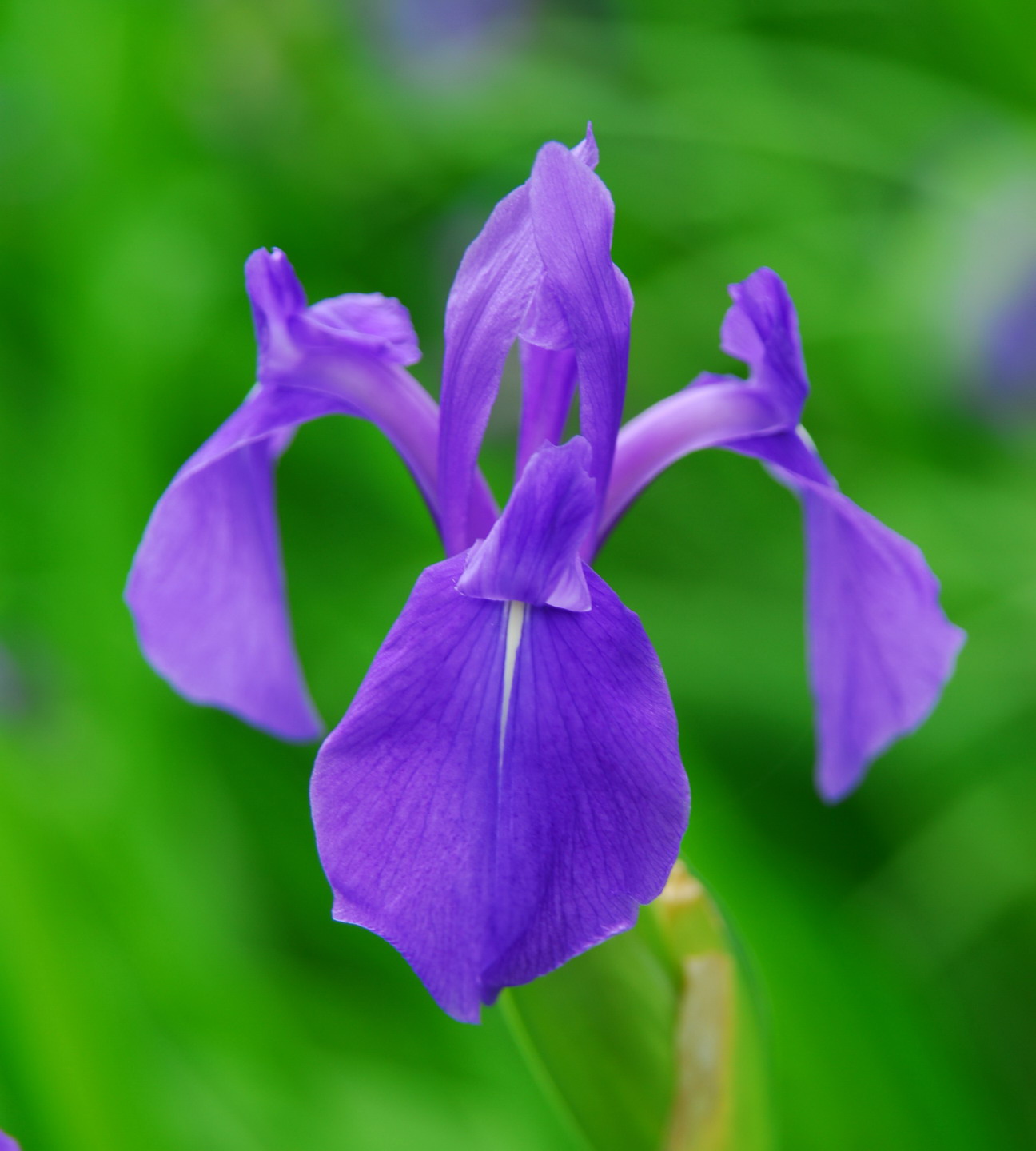- Kakitsubata
Taxobox
name = Kakitsubata

image_width = 250px
image_caption =
regnum =Plant ae
divisio = Magnoliophyta
classis = Liliopsida
ordo =Asparagales
familia =Iridaceae
genus = "Iris"
subgenus = "Limniris "
subsection = "Ensatae "
series =
species =
binomial = "Iris Laevigata"
binomial_authority ="Iris Laevigata" or Kakitsubata which is its Japanese name, is a Japanese species of iris and is related to the Iris Ensatae. It is found growing in shallow waters and seems to prefer marshy and still ponds although it can also be grown in damp soil if conditions are right. Flowers are usually blue, purple or violet and have unique colour patterns including some types with predominantly white flowers with blue spots, called "Washino-o" and dark purples bordered with white, called "Maikujaku".
The Kikatsubata differs from the Japanese Iris mainly in being more dependent on water and in lacking the strong midrib of the foliage. When planned from seeds, they usually germinate in 30-545 days although even under good conditions germination may be erratic. Seeds should be sown about 6mm deep in a peaty seed sowing mix at about 15-20°C with frequent watering. Some varieties are almost ever-blooming even in mild climates, which makes it a good candidate for water gardens in temperate areas in Europe and the Americas.
The Kakitsubata or Iris Laviegata has been cultivated in Japan for more than a thousand years and some varieties mentioned in Japanese gardening books in the late 1600s are still in existence [cite web | title = The Gardener's Iris Book - William Shears (2002) | url = http://www.amazon.co.uk/exec/obidos/ASIN/1561585602 | publisher = Taunton Press Inc | accessdate = October 17 | accessyear = 2002] .
Alternative names for the Iris Laviegata is "
Iris albopurpurea " and "Iris phragmitetorum ". It is sometimes known commonly as "Rabbit Ear Iris", "Shallow-Flower Iris", "Yan Zi Hua" or "Yan zi hua".In nihongo|Chiryū|知立市|Chiryū-shi (Aichi prefecture ,
Japan ) one can find a lovely example of a water garden in the "Yatsuhashi Kakitsubata Garden" (八橋かきつばた園) at the [http://www.city.chiryu.aichi.jp/0000001858.html Muryojuji Temple] which has been known for it's Kakitsubata garden since theHeian period and is also the place where the Japanese PoetAriwara no Narihira wrote a poem in the "Ise Monogatari " using the five initial letters of "Ka-Ki-Tsu-Ba-Ta". The poem goes:"KArakoromo KItsutsu narenishi TSUma shi areba HArubaru kinuru TAbi wo shi zo omou" (HA can also be read BA). [ [http://www.classical-japanese.net/Translation/narihira_karakoromo.html Ise Monogatari] (no 9) - Ariwara no Narihira: English translation: Traveling in faraway places, I recall the old days wearing my Chinese-style garments and being with my beloved wife.
The Kikatsubata is the prefectural flower of Aichi prefecture as well as of Chiryū City. Each year at the end of April a festival is held in the temple garden as a celebration of the flowering and attracts about 250,000 visitors each year [http://www.city.chiryu.aichi.jp/0000001868.html Rabbit Ear Iris Festival] .
In Japanese:から衣着つつなれにしつましあればはるばる来ぬる旅をしぞ思ふ]References
External links
* [http://www.britishirissociety.org.uk/gbi/irises.html British Iris Society]
Wikimedia Foundation. 2010.
